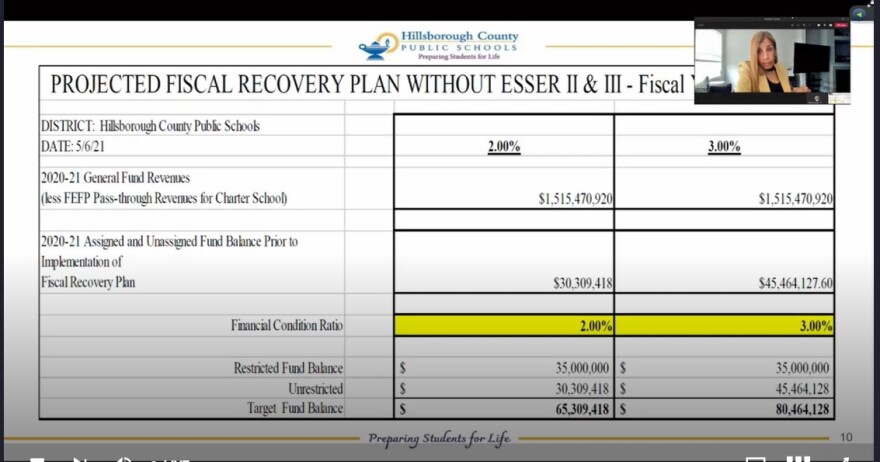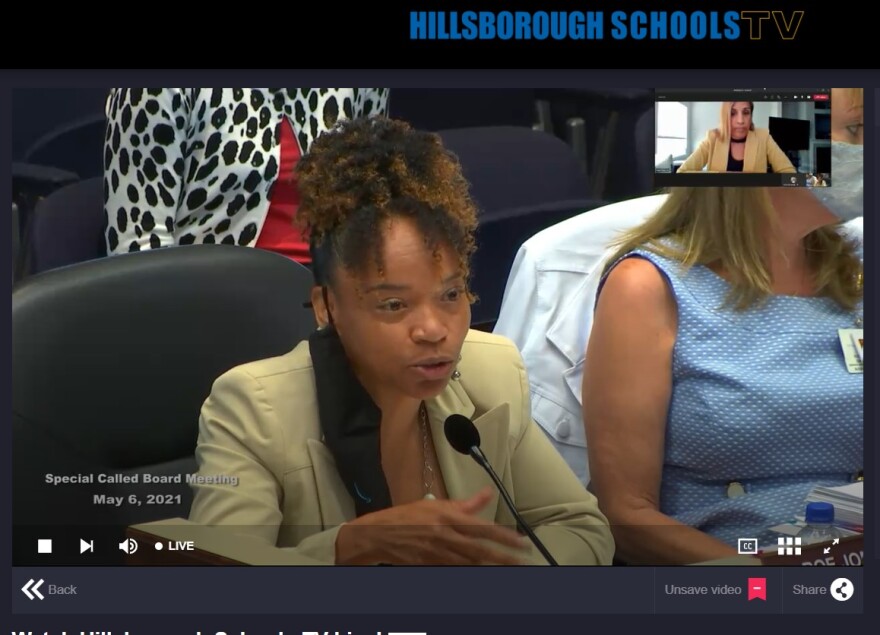A plan to rescue Hillsborough County Schools from what officials have described as a more than $100 million budget deficit was delivered to the school board Thursday, showing that the situation is apparently no longer as dire as previously projected and might be remedied with $10 million to $25 million in federal aid dollars.
The plan was presented by the district’s team of financial experts after accountants dug into the budget and found tens of millions in cost-savings — some pandemic-related — along with extra property tax income due to the booming real estate market.
Board members plan to vote on it May 11, just ahead of a mid-May deadline from the state Department of Education which has threatened a financial takeover of the beleaguered school district unless it gets its financial affairs in order.
“We mitigated expenditures of $53.7 million,” said Hillsborough Schools chief financial officer Romaneir Johnson at a special school board meeting. She also said that the “budget is fluid and is going to change.”

Johnson said less overtime paid, reduced travel expenses, filling only critical vacancies, and a boost in property tax revenue led to the shifting outlook.
Savings also came by moving $11 million in COVID-related expenditures out of the general fund and into a pot paid for by federal aid money.
The projected fiscal recovery plan delivered to board members showed two ways forward: using using Elementary and Secondary School Emergency Relief Fund (ESSER) money or not using it — funds provided by the federal government to help schools during the pandemic.
Between $10-25 million in ESSER funds would be needed to get the nation’s eighth largest school district into the black for 2020-21, the data sheets showed.
“The ESSER money is this band-aid that is not recurring, but it will give us the time that we so desperately need to be able to put in place some of these strategies and see the recurring revenue start to come in and build up our fund balance,” said board member Stacy Hahn.
“I do want to make sure that we are basing these strategies on recurring dollars, that we fix this problem. We cannot kick it down the road anymore," she added.
Superintendent Addison Davis said he had spoken with Education Commissioner Richard Corcoran, who advised him to send two versions of the plan, one using federal aid money to bridge the gap and another without those funds.
Davis said he should know more in the next couple of days.
Corcoran had previously said that emergency relief cash would not be an acceptable solution.
“If there is a thought to solving this recurring financial issue by using one-time stabilization funds, I strongly encourage you to remember that fixing a long-term problem by using a short-term resolution will not get the district on solid ground,” Corcoran wrote in a letter to the school board dated April 22.








